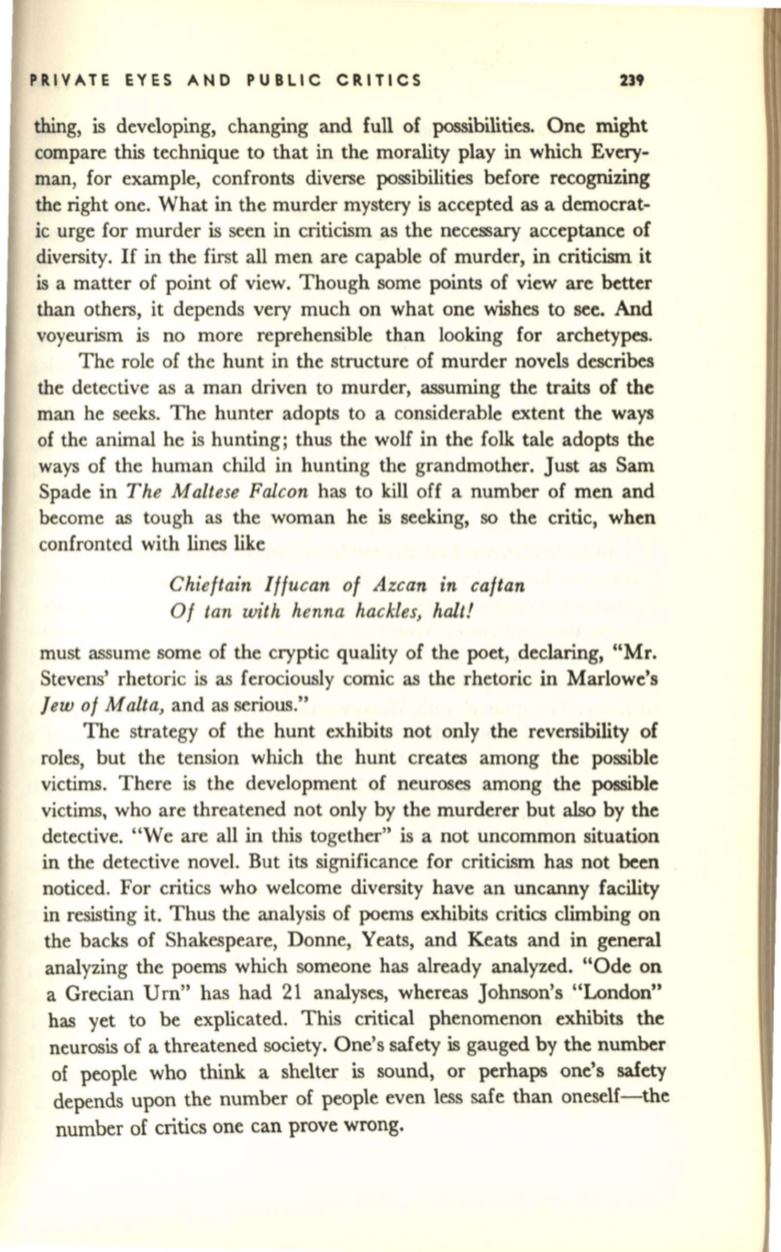
PRIVATE EYES AND PUBLIC CRITICS
239
thing, is developing, changing and full of possibilities. One might
compare
this
technique to that in the morality play in which Every–
man, for example, confronts diverse possibilities before recognizing
the right one. What in the murder mystery is accepted as a democrat–
ic urge for murder is seen in criticism as the necessary acceptance of
diversity.
If
in the first all men are capable of murder, in criticism it
is a matter of point of view. Though some points of view are better
than others, it depends very much on what one wishes to see. And
voyeurism is no more reprehensible than looking for archetypes.
The role of the hunt in the structure of murder novels describes
the detective as a man driven to murder, assuming the traits of the
man he seeks. The hunter adopts to a considerable extent the ways
of the animal he is hunting; thus the wolf in the folk tale adopts the
ways of the human child in hunting the grandmother. Just as Sam
Spade in
The Maltese Falcon
has to kill off a number of men and
become as tough as the woman he is seeking, so the critic, when
confronted with lines like
Chieftain Iffucan of A zcan in caftan
Of tan with henna hackles, halt!
must assume some of the cryptic quality of the poet, declaring, "Mr.
Stevens' rhetoric is as ferociously comic as the rhetoric in Marlowe's
Jew of Malta,
and as serious."
The strategy of the hunt exhibits not only the reversibility of
roles, but the tension which the hunt creates among the possible
victims. There is the development of neuroses among the possible
victims, who are threatened not only by the murderer but
also
by the
detective. "We are all in this together" is a not uncommon situation
in the detective novel. But its significance for criticism has not been
noticed. For critics who welcome diversity have an uncanny facility
in resisting it. Thus the analysis of poems exhibits critics climbing on
the backs of Shakespeare, Donne, Yeats, and Keats and in general
analyzing the poems which someone has already analyzed. "Ode on
a Grecian Urn" has had 21 analyses, whereas Johnson's "London"
has yet to be explicated. This critical phenomenon exhibits the
neurosis of a threatened society. One's safety is gauged by the number
of people who
think
a shelter is sound, or perhaps one's safety
depends upon the number of people even less safe than oneself-the
number of critics one can prove wrong.


